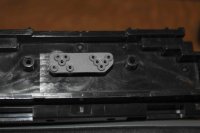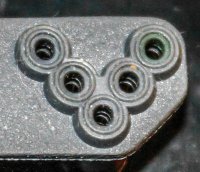- Joined
- Sep 10, 2007
- Messages
- 1,569
- Reaction score
- 1,457
- Points
- 293
- Location
- Laramie, Wyoming
- Printer Model
- Canon i960, Canon i9900
Interesting...there is no type of sealant between the nozzle plate and ceramic? Since the cooeficient of expansion between the materials can vary, (and the nozzle plate definitely gets hot), I would expect SOMETHING is used to prevent inter-channel leakage.




